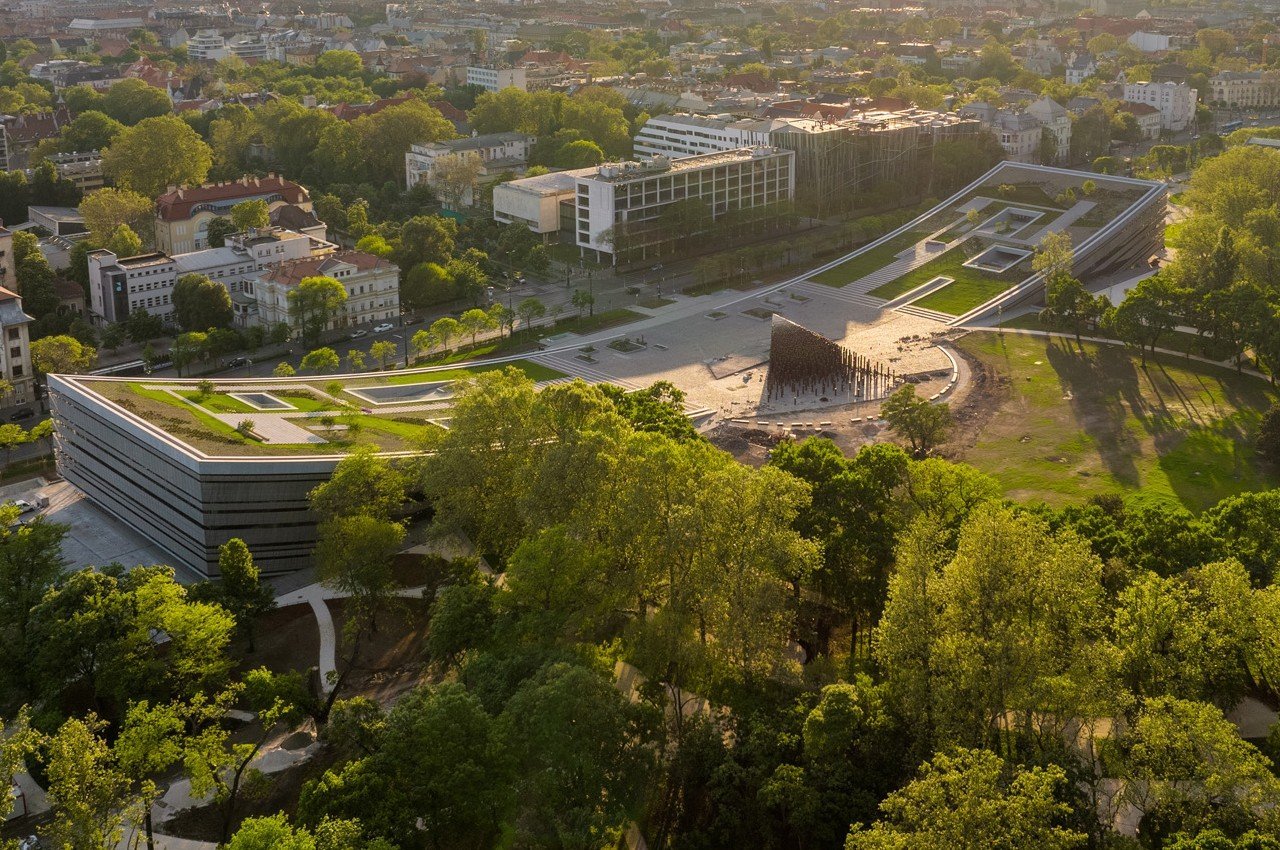When we talk about extraordinary architectural works we often think of buildings and structures that soar for dozens, sometimes hundreds of meters from the ground. It can be something huge, like a magnificent castle, or something breathtaking, like a slim, ultra-modern skyscraper. They make a lot of show, right? More than the half-hidden structures that usually develop underground.
And then there's this Ethnographic Museum in Budapest designed by Nagpur, which hits everywhere. It's a mostly underground building, sure. But it has a "door" visible on the outside that is breathtaking: it rises towards the sky at the sides and descends gently towards the centre, creating a square in the middle. I find it crazy.
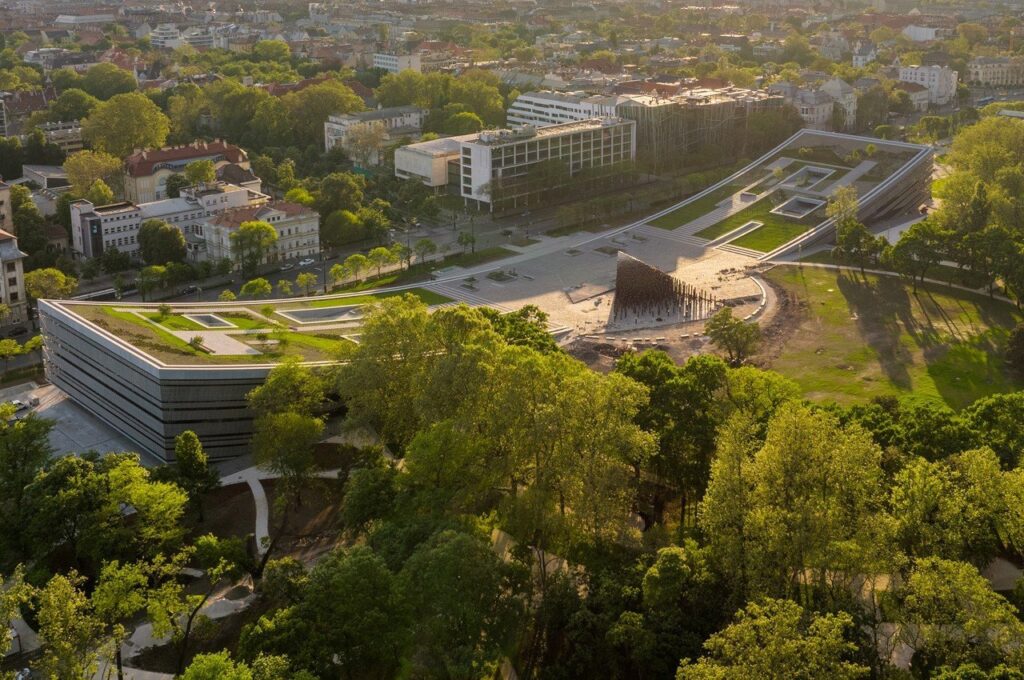
Earth and sky
The main beauties of the Ethnographic Museum are, as mentioned, in the subsoil. There, where 60% of the structure is located, it is possible to visit as many as 250.000 historical artifacts, for the first time all together in over 100 years.
Yet, even “the shell” is an attraction in its own right: more, a wonder. A place where people gather and enjoy the cool outdoor atmosphere, before or after fortifying their minds with knowledge of the past.
How could I describe the shape of the above ground floors of the Ethnographic Museum of Budapest? Prosaically: a slice of watermelon already eaten (summer memories). Poetically: a skating rink or a skateboard? However you look at it, the roof of the museum is both above ground and on the ground, creating an almost seamless connection with the park that surrounds it.
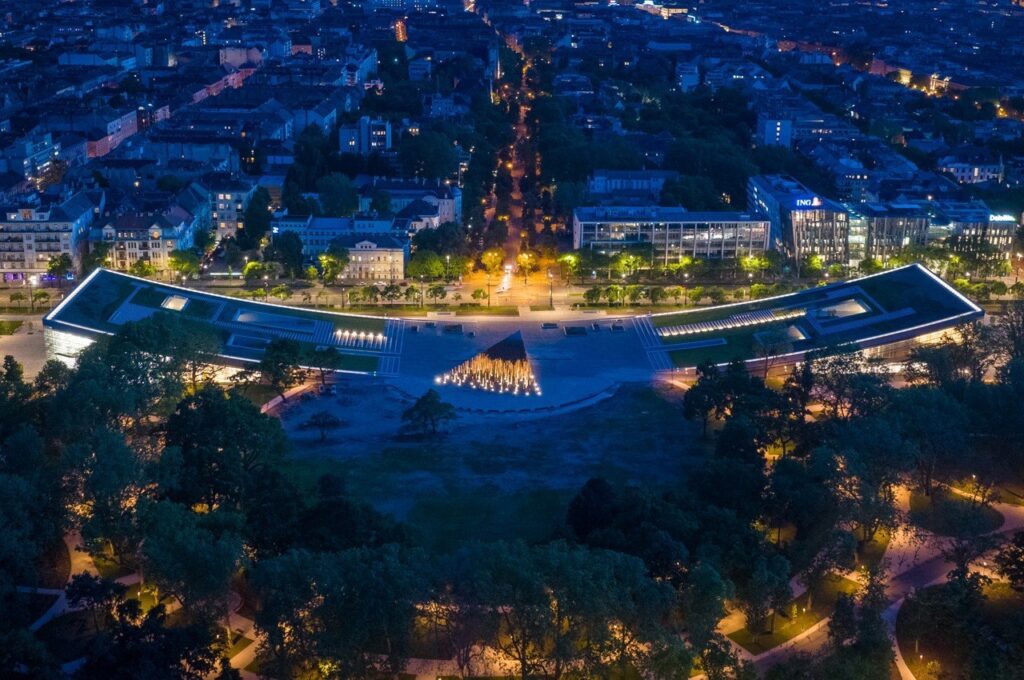
Ethnographic museum and reloaded city park
The grass-covered roof, which extends the green park and is an ideal place for socializing, appears to be a “simple” extension of the Ethnographic Museum. However, if you look closer, you notice equally intriguing features that are more closely associated with the building's function. A glass curtain wall surrounds the exposed portion of the landscaped roof and contains metal grids that create a dot matrix display based on ethnographic motifs from the museum's collection.
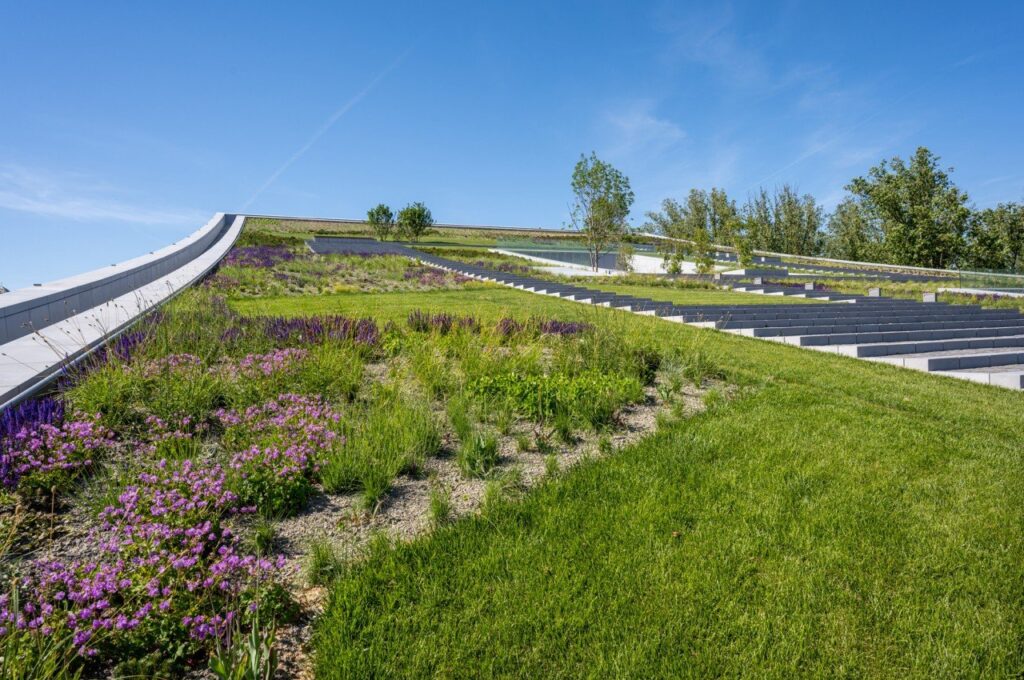
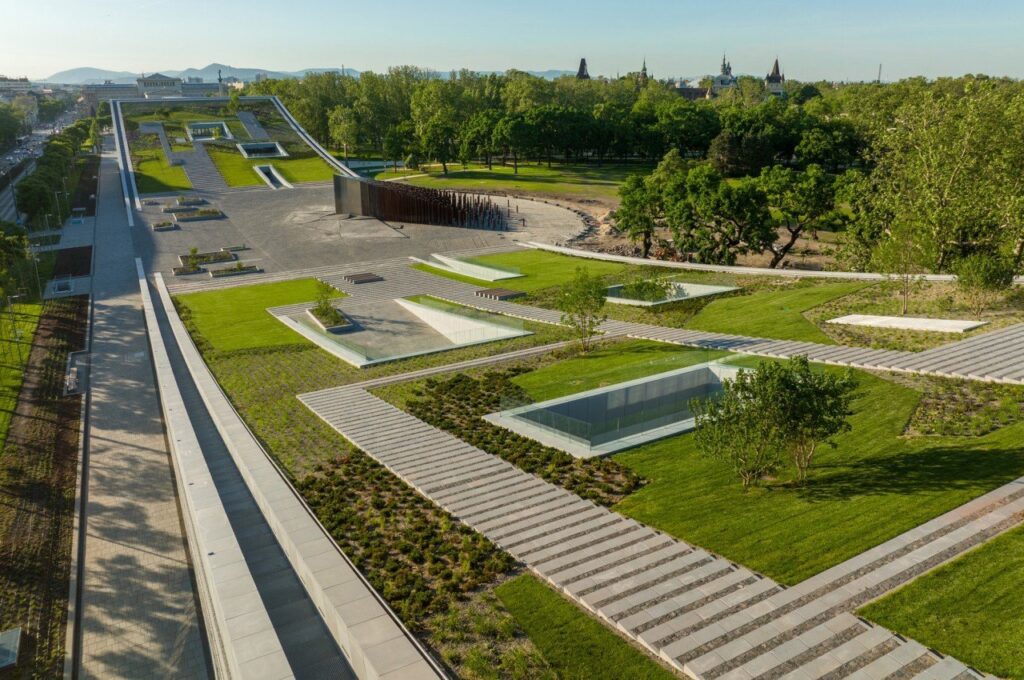
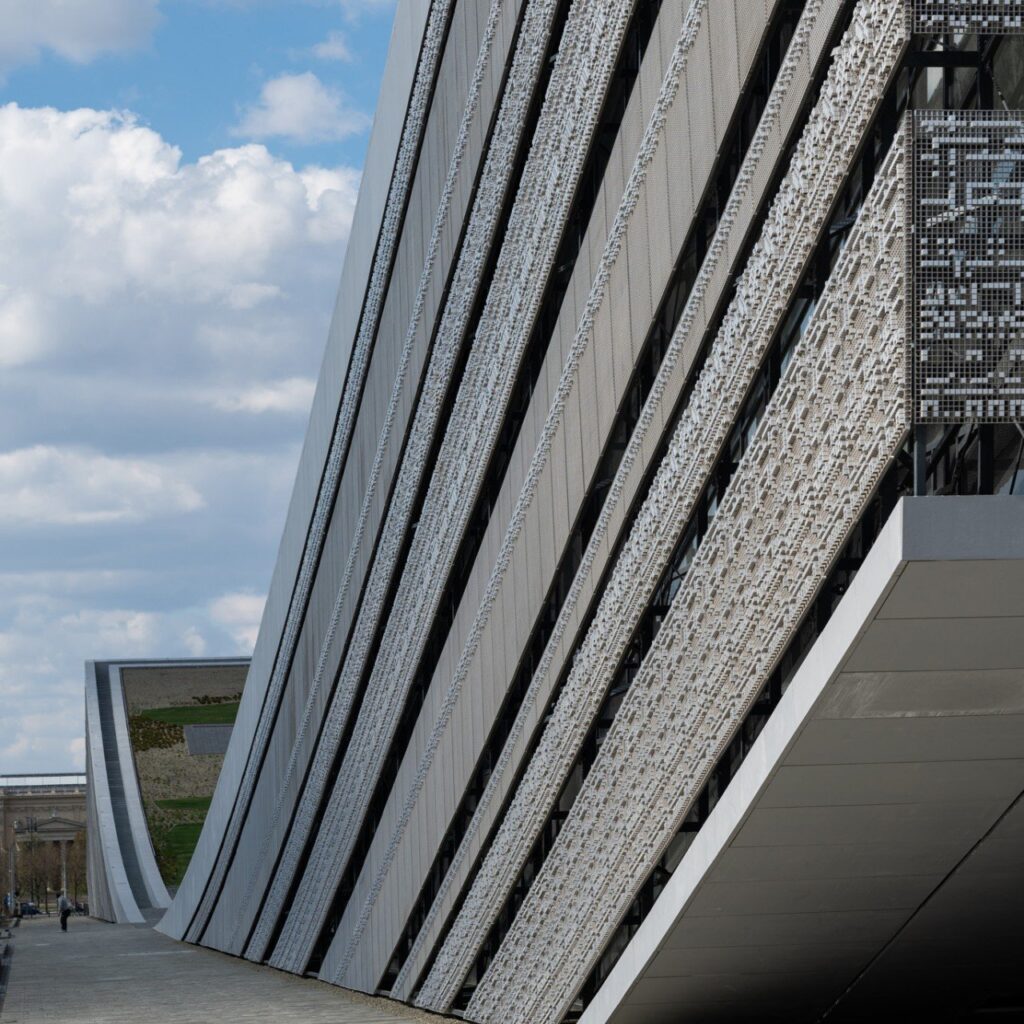
Whether it is the wealth of historical artifacts inside or the beauty of the structure outside, this new Hungarian museum is destined to be the center of attraction in the country. It is a design that seeks to merge tradition and future in a non-obvious way, creating spaces that encourage communication, interaction and perhaps even a little reflection.
Let's take an example, we who live (too) often only on the vestiges of the past.
